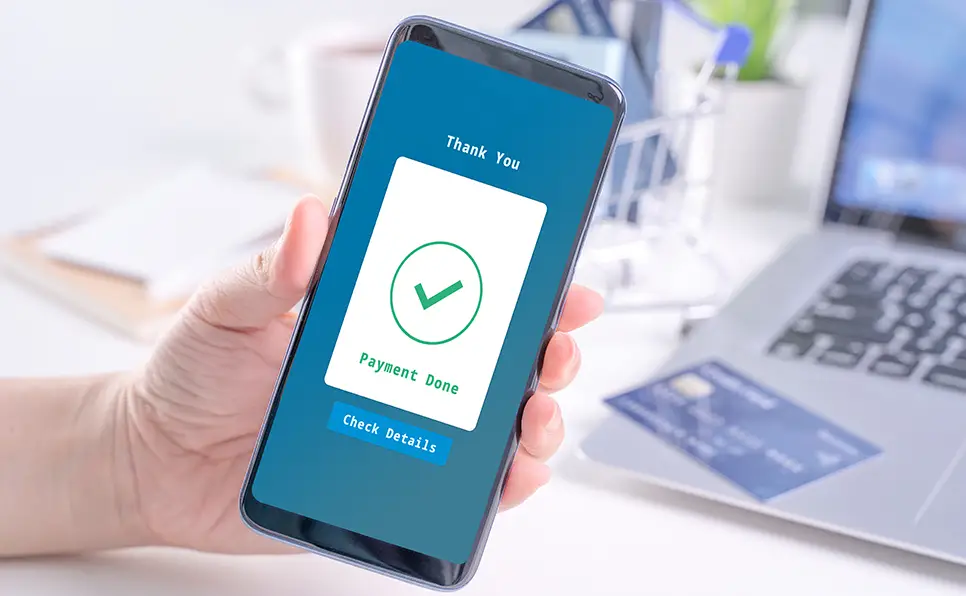Most people associate checks with dinosaurs, dodo birds, and other extinct creatures. So while paper checks are on their way out, eChecks are still going strong. Nacha, the company that manages the eCheck network, claims that there were 29.1 billion eCheck payments completed in 2021.
Continue reading to find out what eChecks are and how they function if you want your company to share in some of those billions.
Defining eChecks
EChecks can best be characterised as a “digital version” of paper checks. Direct debit, an internet check, and other phrases like an online check are also used to describe eChecks.
Electronic checks (eChecks) employ the Automatic Clearing House (ACH) to perform a direct debit from the customer’s checking account and into the merchant’s commercial bank account. A payments processor helps with each step of the transaction.
Electronic check transmission makes these transactions quicker, safer, and simpler.
As long as the bank makes this option available for use online, nearly all checking accounts now have the capacity to submit an eCheck.
What sets it apart from paper checks?
Paper checks are simply paper by definition, and they might soon be a thing of the past. Customers are simply writing less checks for their daily costs, which is the cause of this. They much prefer to use electronic payment options like eChecks.
Online retail sales in the US increased by 15% in 2018, totaling $517 billion. It is nevertheless anticipated to win an even bigger portion of global trade. This demonstrates that most transactions are conducted online, which led to the development of brand-new, entirely digital means of payment. These payments are typical for being undetectable, simple, and fast.
The benefit of using eChecks is that they process far more quickly than paper checks do. Here are some of the causes:
- Paper checks require more time and effort to deposit at the bank.
- Paper checks take longer to process.
- Hold than electronic checks, and electronic checks speed up the procedure significantly.
How eCheck works?
Banks can move funds instantly from one account to another thanks to eChecks. They achieve this by utilising a digital network known as the Automated Clearing House, or ACH. According to Nacha, the ACH network connects all banks in the U.S. and moves about $72.6 trillion annually (formerly the National Automated Clearing House Association).
The eCheck procedure includes the following steps to ensure that all of the money reaches to its intended recipients:
- Authorization of Payment : The client first enters the details of their bank account and authorises payment. Usually, an internet payment gateway is used for this. A one-time purchase or a recurring subscfription may be authorised.
- Payment Request : The company’s payment processor creates a payment request using the account information of the customer. The processor transmits batches of these requests to the Automated Clearing House at specific times each day.
- Payment Confirmation: The ACH sorts the batches and sends the customer’s bank the payment request. The bank confirms the information is accurate and that there are funds available.
- Payment : Following the confirmation of the transaction, the funds are transferred from the customer’s account to the company’s account.
eChecks can also function in reverse, such as with online tax refunds or direct deposit payroll. Here, the recipient consents to a deposit rather than a withdrawal and provides information about their bank account.
Even if these processes seem difficult, processing them is still quicker than processing a paper check. Also, the banking information is encrypted during the entire procedure, unlike a paper check, which is handled by many people.
What advantages do eChecks offer?
There are a number of advantages to using eChecks, which may be the reason why ACH processing has been increasing every year since 2012.
1. Cost-cutting
In the first place, ACH does away with the necessity for pricey credit card networks. In place of high card network exchange charges based on a percentage of the dollar amount transacted are lower flat costs with no transaction amount restriction. If your company frequently accepts sizable payments, think about the economic advantages of ACH over credit cards.
2. Ease of access
The monies are transmitted quicker and more conveniently than with paper checks because ACH is an electronic process.
3. Repeated payments
eCheck payments are the ideal option for businesses that operate on subscriptions. This is why:
- Customers can sign up for autopay without you having to fear that their credit card information will change. While credit card numbers frequently change, bank account information doesn’t. Services for processing ACH payments assist avoid lost business and payment lapses.
- Monthly costs pile up over time, and a company can save a ton of money by signing up for a lengthy membership. Network exchange fees are eliminated with electronic payments.
- Online electronic check payments are simple to start. Make a straightforward, secure form page that your consumers may fill out. Setting up autopay simply takes a moment, and because they won’t need to write paper checks in the future, it will save them time.
- You can offer incentives for your consumers to join up because using an ACH direct payment can save your organisation money. Give them a tiny cash incentive, and you’ll probably end up sharply reducing your own expenses.
How to integrate eChecks in small businesses?
Accepting eCheck payments can greatly expand your consumer base and enhance your revenue. This is especially true for US-based companies that allow clients to make recurring transactions. What you would need to do in order to take eChecks as a form of payment is as follows:
- A merchant account should be opened using an ACH provider.
- Get consent from the client by a digital signature or a phone call that is recorded.
- Provide payment details, such as checking account numbers, routing numbers, the total amount owed, and the due date.
- You can now manage eCheck payment processing with the aid of your ACH provider.
Selecting to work with ACH providers who have a track record of dependability and reputation is the best way to provide an extra degree of protection. Make sure that the data related to your customers as well as your business is encrypted.
Only when it is absolutely necessary, permit access to any financial data for employees. Finally, notify your ACH provider right once if you come across any fraudulent transactions.
How to get started with eChecks?.
eCheck payments are particularly advantageous to businesses that are already fairly established. The easiest place to start is by finding out if your existing payment processor accepts ACH transactions. If not, you should look for a different payment processor. You might want to request a recommendation from your business bank.
Also, it’s practical for clients if you create an electronic check form page on your website from which you may start asking for the routing number and checking account number of customers. To ensure that your page is secure, involve your payment processor and developer. Make sure your consumers feel secure providing this information to you online.
Final words:
Why local businesses should be concerned about eChecks
Simply said, allowing eCheck payments from your clients will lower your processing costs. Also, it will be safer and give your consumers one additional payment option. They should be happier as a result, and it should be simpler to get paid on time. Taking eCheck payments is similarly simple, and you may use them for both online and offline transactions.



